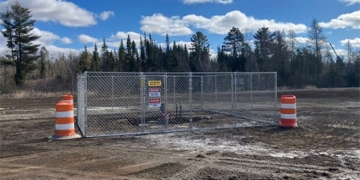In just a few hours, Tropical Storm Idalia is expected to make landfall in Florida (USA) on the morning of August 30, having rapidly intensified from a Category 1 to a Category 3 storm.
Scientists warn that such weather phenomena are becoming more frequent. Less than a year ago, Hurricane Ian devastated the western part of Florida. This storm also gained enormous strength within just a few hours.

A house destroyed by Hurricane Idalia making landfall at Keaton Beach, Florida, USA, on August 30, 2023. (Photo: AFP/TTXVN).
Scientists point out that one of the causes of this phenomenon is climate change.
Warmer ocean waters mean there will be more storms or storms of greater intensity. For Hurricane Idalia, the National Hurricane Center (NHC) reported that the rapid intensification of the storm would occur as the storm system passed over warm waters in the eastern Gulf.
Currently, those warm waters are already very warm. This summer, the ocean temperatures around Florida have reached up to 38 degrees Celsius – equivalent to the temperature of a hot tub.
Several recent studies have emphasized the link between climate change and the rate of storm intensification.
In 2019, research by scientists at the Geophysical Fluid Dynamics Laboratory of the National Oceanic and Atmospheric Administration (NOAA) and Princeton University found that one of the causes of “significant increases in the rate of tropical storm intensification” from 1982 to 2009 was due to global warming.
Similarly, a research group in 2022 led by storm forecaster Phil Klotzbach from Colorado State University concluded that instances of intensification at a rate of at least 50 knots per hour over 24 hours have significantly increased from 1990 to 2021, partly due to rising sea surface temperatures.
A 2017 study indicated a significant increase in the intensity of tropical storms over short periods in certain areas of the Atlantic basin – especially the central and eastern tropical Atlantic from 1986 to 2015.
Meanwhile, according to a 2017 study by storm expert Kerry Emanuel from the Massachusetts Institute of Technology (MIT), it was found that at the end of the 20th century, the world saw a storm intensifying at a rate of 60 knots per hour over 24 hours only once every 100 years before making landfall. However, by 2100, such events could occur every 5 to 10 years.
Climate change, combined with rising sea levels, has become a formula for storms that cause significant damage to coastal communities.
In his research, expert Emanuel wrote: “Because it is difficult to predict the extent of storm intensification, the rates of injury and death in disasters will be higher”.




















































